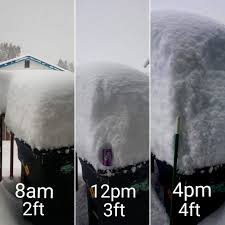
Introduction
The recent snow storm that hit Montana has left communities grappling with challenges as they recover from the winter’s onslaught. With reported snowfall exceeding two feet in some areas, this event has significant implications for travel, local services, and emergency responses. Understanding the full impact of such extreme weather is vital, as climate patterns shift and winter storms become increasingly unpredictable across the United States.
Storm Details and Impact
On March 23, 2023, a powerful snow storm swept across Montana, with weather warnings issued across the state. The National Weather Service reported snowfall amounts ranged from 12 to 30 inches in various locations, particularly affecting areas in western Montana including Missoula and Glacier County. The heavy snow brought with it strong winds, leading to blizzard conditions that severely impacted visibility and created hazardous driving conditions.
Many residents found themselves stranded due to impassable roads, prompting local authorities to declare a state of emergency in several counties. Emergency services worked round the clock, though response times were slowed by treacherous conditions. Schools and businesses were also forced to close, with local governments advising residents to stay indoors until conditions improved.
Community Response
In response to the storm, local shelters and community centers opened their doors to provide refuge for those in need. Volunteers rallied to assist vulnerable populations, offering rides to medical appointments and delivering meals to those unable to leave their homes. The storm also highlighted the importance of community resilience and preparedness in the face of natural disasters.
Looking Ahead
As the state begins to recover, forecasts suggest that warmer temperatures may follow, potentially leading to rapid snowfall melt and increased risk of flooding. Residents are urged to remain vigilant and prepare for possible flood advisories in the coming weeks. The storm serves as a reminder of the need for robust infrastructure and emergency preparedness plans to handle extreme weather as climate patterns evolve.
Conclusion
The recent Montana snow storm has undoubtedly left a big mark on the community, both in disruption and the display of resilience among its residents. As recovery efforts proceed, it is essential to analyze the situation critically to ensure that such storms, which are becoming more frequent, are met with adequate preparedness and response mechanisms. This event illustrates not only the immediate challenges that arise from severe weather but also the importance of community solidarity in overcoming these obstacles.



